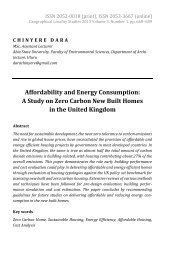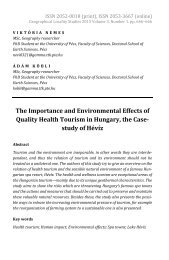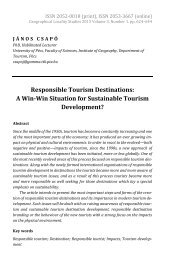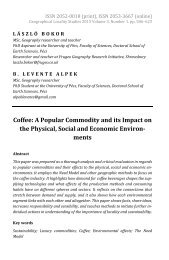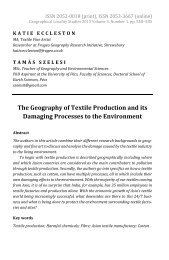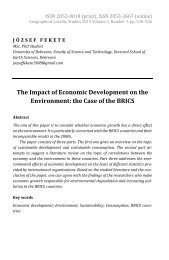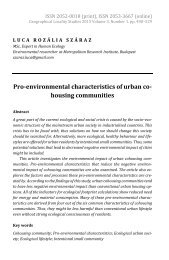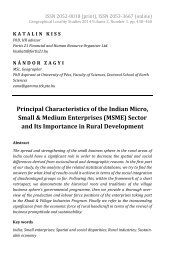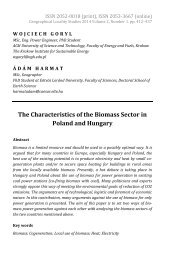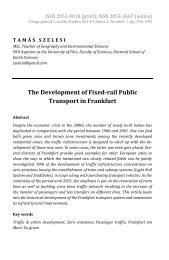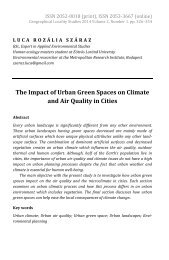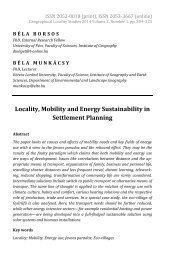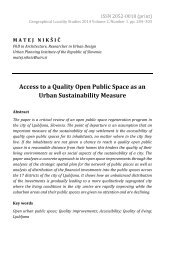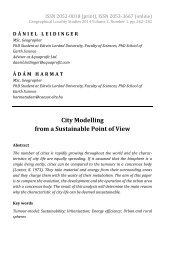Fanni Sáfián: The Synergies of Community Ownership, Renewable Energy Production and Locality – The Cases of Güssing and Samsø
This paper presents the concept and the main forms of community ownership. Analysing the literature and the cases of Güssing, Austria and Samsø, Denmark helps to recognise how to promote a successful local renewable energy project and what kind of additional benefits may be earned by applying the appropriate ownership model and project outline.
This paper presents the concept and the main forms of community ownership. Analysing the literature and the cases of Güssing, Austria and Samsø, Denmark helps to recognise how to promote a successful local renewable energy project and what kind of additional benefits may be earned by applying the appropriate ownership model and project outline.
Create successful ePaper yourself
Turn your PDF publications into a flip-book with our unique Google optimized e-Paper software.
<strong>Fanni</strong> <strong>Sáfián</strong><br />
<strong>The</strong> transition process was accelerated when Peter Vadasz who was<br />
elected to the mayor <strong>of</strong> <strong>Güssing</strong> (MARCELJA, D. 2010).<br />
Figure 2 <strong>–</strong> <strong>The</strong> situation <strong>of</strong> <strong>Güssing</strong> in Austria <strong>and</strong> in Europe.<br />
Edited by SÁFIÁN, F. (2014)<br />
Already since 1989, energy saving investments have been made in<br />
public buildings such as insulation, changing windows or implementing<br />
better monitoring <strong>and</strong> maintenance practices, actively communicated<br />
to the local residents. As a consequence, after a few years, energy<br />
expenses <strong>of</strong> the public sector decreased by 40<strong>–</strong>50% (VADASZ, P.2012,<br />
VADASZ P. <strong>–</strong> BŐDI K. 2012).<br />
When planning the transition to local renewable energy sources,<br />
local wood seemed to be the most significant energy source, since 45%<br />
<strong>of</strong> the district is covered with forests. To solve the problem <strong>of</strong> the<br />
fragmented forest parcels, 5200 forest owners established the Forest<br />
Association <strong>of</strong> Burgenl<strong>and</strong> (Burgenländischer Waldverb<strong>and</strong>) <strong>and</strong> signed<br />
402




